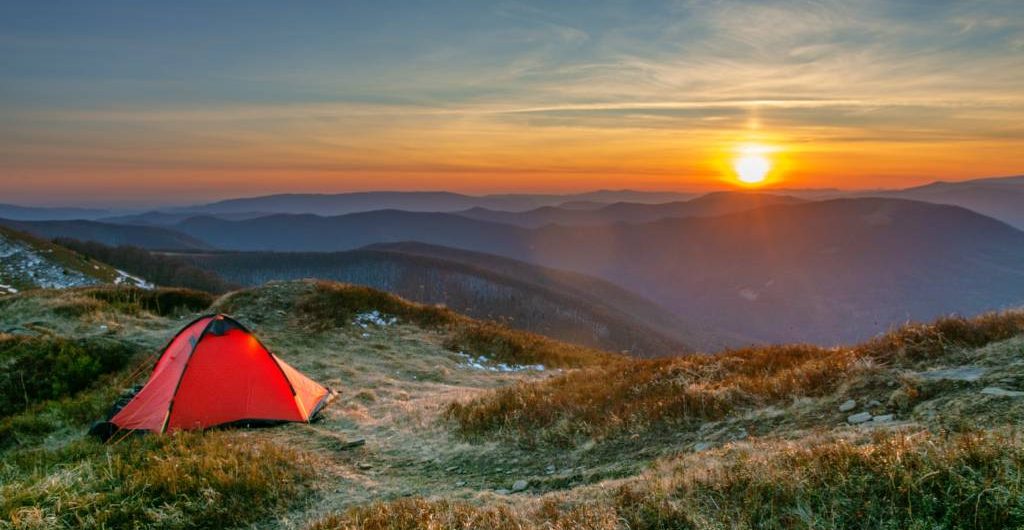
Definition and Purpose of Trekking and Camping: Trekking and camping are outdoor recreational activities that involve exploring natural landscapes, immersing oneself in the wilderness, and connecting with nature. They provide an opportunity to escape the hustle and bustle of urban life, offering a unique blend of adventure and serenity.
Popularity and Appeal: These activities have grown in popularity due to the desire for adventure, the need for digital detox, and the increasing appreciation for nature’s beauty. Trekking and camping allow individuals to disconnect from the digital world and find solace in the great outdoors.
Trekking
Types of Trekking
- Day Hiking: Short excursions, typically lasting a few hours, ideal for beginners.
- Multi-Day Trekking: Longer journeys that span several days, often requiring camping.
- Long-Distance Thru-Hiking: Ambitious treks covering hundreds or thousands of miles, such as the Appalachian Trail or the Pacific Crest Trail.
- Essential Gear and Equipment: Trekking necessitates appropriate gear, including hiking boots, backpacks, navigation tools, and clothing suited to the environment.
- Health and Safety Considerations: Trekkers must be aware of altitude sickness, wildlife encounters, and unpredictable weather conditions.
- Popular Trekking Destinations: Iconic trekking spots include the Inca Trail to Machu Picchu, the Annapurna Circuit in Nepal, and the Camino de Santiago in Spain.
- Benefits of Trekking: Trekking offers physical fitness, mental relaxation, and a sense of accomplishment as trekkers challenge themselves and explore breathtaking landscapes.
Camping
Types of Camping
- Tent Camping: Setting up a tent in designated campsites or the backcountry.
- Backpacking Camping: Carrying camping gear into the wilderness on multi-day treks.
- Car Camping: Convenient camping near vehicles in established campgrounds.
- RV Camping: Traveling with recreational vehicles for comfortable camping.
- Camping Gear and Essentials: Camping gear includes tents, sleeping bags, cooking equipment, and lighting sources.
- Campsite Selection and Setup: Choosing the right campsite is crucial for safety and enjoyment. Campers must follow leave-no-trace principles and minimize environmental impact.
- Campfire Safety and Cooking: Campfires should be carefully managed, and campers must be skilled in outdoor cooking.
- Environmental Considerations: Sustainable camping practices are essential to protect natural ecosystems and minimize human impact.
- Camping as a Recreational Activity: Camping provides an opportunity for relaxation, stargazing, and bonding with family and friends around a campfire.
Trekking and Camping Combined
- Trekking to Campsites: Many treks involve camping at designated sites along the route, allowing trekkers to immerse themselves in the wilderness.
- Campsite Selection for Trekkers: Trekkers need to consider factors like water sources, safety, and regulations when choosing a campsite.
- Wilderness Survival Skills: Basic survival skills, such as navigation, first aid, and fire-building, are crucial for campers and trekkers alike.
- Leave No Trace Principles: Adhering to principles like packing out waste and minimizing campfire impact helps preserve natural environments.
- Cooking and Food Storage While Trekking and Camping: Proper food handling and storage are vital to prevent wildlife encounters and ensure safety.
Benefits of Trekking and Camping
- Physical Health Benefits: Both activities promote physical fitness through hiking, carrying gear, and outdoor activities.
- Mental and Emotional Well-being: Nature has a calming effect, reducing stress and promoting mental well-being.
- Connection to Nature and Environment: Trekking and camping foster a deeper appreciation for the environment and wildlife.
- Social and Team Building Benefits: These activities encourage bonding and teamwork among participants.
- Personal Growth and Self-Reliance: Overcoming challenges in the wild can boost confidence and self-reliance.
Challenges and Considerations
- Weather and Environmental Factors: Trekkers and campers must prepare for rapidly changing weather conditions.
- Safety Precautions: Precautions are vital to mitigate risks associated with wildlife, altitude, and terrain.
- Permits and Regulations: Many natural areas require permits, and campers must respect park regulations.
- Wildlife Encounters: Knowledge of wildlife behavior and safety measures is crucial when camping in natural habitats.
- Sustainability and Ethical Practices: Practicing responsible outdoor ethics ensures these activities remain sustainable and enjoyable for future generations.